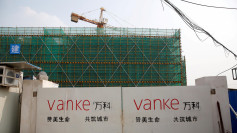Data released during the weekend on China's home market has not been good. According to Mingtiandi, Chinese home prices have continued on a downward trend. China's largest cities have been locking down as government policies governing prices have taken effect.
70 cities have been surveyed by the National Bureau of Statistics of China. Through the data collected, it was determined that housing prices averaged 0.9 percent of the growth in comparison to October, where the rating was 1 percent higher. This survey came after the government encouraged citizens to curb on home purchases and government banks tightened their lending rules.
China's 'premier' cities Beijing, Guangzhou, Shanghai, and Shenzhen were of particular importance, as they posted a 0.3 percent growth in home prices. Beijing and Shanghai, particularly, had growth in home prices at 0.6 and 0.5 percent. Shenzhen mirrored the downward trend of national figures, while Guangzhou home prices stayed adamant.
Even the electronics market is feeling the crunch of the housing prices. China's home electronic market has shown signs of slowing down, Nikkei Asian Review reported. Reductions in home purchases affected appliance sales, with people having no homes to stash away their beloved electronics.
The Midea Group, Gree Electric Appliances, and Haier showed the same decline, in contrast to their early 2017 increase. Forced to adapt, the home appliance makers have instead decided to focus on functionality for the meantime, eschewing the need for low prices.
In 2017, the three appliance maker's year-on-year sales have shown no signs of slowing down. Each of them posted highs of about 50% during that year, with Gree going on to post at least 30% in sales this year. Midea appears to have been the hardest hit among the three, with sales figures of only 1% from the period of July to September.
Analysts, however, believe that there is an end to all of this. Zhang Dawei, an analyst at real estate consultancy Centaline, said that the growth is expected to begin with tier three cities, which had supported the market. Tier-one and tier two cities are still on the decline, however, but are expected to turn the corner at some time.
Five cities have seen prices of new homes slip down, while 17 other cities received contractions from their home prices. Both totals have been record-highs for them, exceeding totals gained from October figures.





